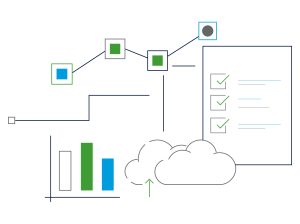2-3 months after the end of the fiscal year, auditors usually begin issuing opinions on the accuracy of the company’s financial statements. If this was an ideal world, the opinions would always be unqualified, confirming that everything in the company runs like a Swiss watch. However, nothing is perfect, and a good auditor is able not only to diagnose the company's strengths based on financial data, but also to efficiently pinpoint areas that need some improvement. What could these be? Let's start with some simple examples.
Why the financial reporting process should involve double checking the accountant’s work
In most companies, accountants use Excel sheets to prepare certain calculations, including income tax or provisions. This is fully permitted by law, yet prone to errors. It is considered good practice to have someone else double check to make sure that the data has been prepared correctly.
And what if the same person does the double-check? Is it in line with reporting standards? The law does not prohibit it directly. Does it help with error-catching? Not necessarily.
What can be done to curb the risk of error occurrence? Order another person to do the double-check. Or, best of all, turn it into a control procedure, to enforce the "two pairs of eyes principle". This principle requires that data entered into the accounting software as well as the source data (such as the income tax calculation) be verified and approved by another person. This should eliminate the risk of errors in the company's accounting records.
A typical quick win – minor change drives a significant outcome.
Learn more about our services
How to devise internal control procedures?
In an ideal world, a list of control procedures involved in the financial reporting process would be one of the items to be found in the accounting policy. Why? Simply put, so as not to force accountants to reinvent the wheel.
By having clear written procedures for checking the correctness of the recorded accounting entries, we can save ourselves the effort of considering each and every one of them individually.
Let's look at what can happen when a company does not have an internal control procedure in place for validating AR invoices. What does the practice tell us?
Prior to registration, each accounting document is checked for formal and substantive correctness. Checking the substantive correctness of AR invoices should enable the verification of whether or not the revenue was actually gained, and the goods were delivered to the recipient (this is achieved, for example, by checking the invoice against the shipping documents or inventory issue documents – known in Poland as WZ). Another crucial issue is verifying the completeness of revenue recognition, e.g. by matching issued invoices with purchase orders or inventory issue documents.
So is this investigation being carried out? If so, great! Potential threats have been averted. And if not? What could be the implications? For example, that the financial statements would recognise some revenue that did not occur. And what if there are people in the company who have received a bonus because of this revenue?
A financial statements audit conducted by a good auditing firm offers a new perspective on the operation of the internal control system
A statutory auditor knows that the devil is in the detail. When conducting an audit like a true detective, they look into every single item on the financial statements (unless is it below the materiality threshold). What benefits does their work provide to the management and owners of the audited entity? Firstly, they gain certainty that their company's financial records comply with the legal requirements.
Secondly, an auditor does not merely look into the figures in the financial statements. When carrying out the procedures, they must understand the processes that are material from the perspective of reporting and analyse internal controls to pinpoint their strengths, but also weaknesses – as this is where the risks for a business may lurk. As a result, an experienced auditor is able to diagnose the processes within the company that can be streamlined or improved, where gaps can be closed or which can be moved to another place. This often allows to eradicate errors that otherwise would expose the entity to substantial costs.
It is advisable to approach financial audit as a chance to take your business activity to the next level.








